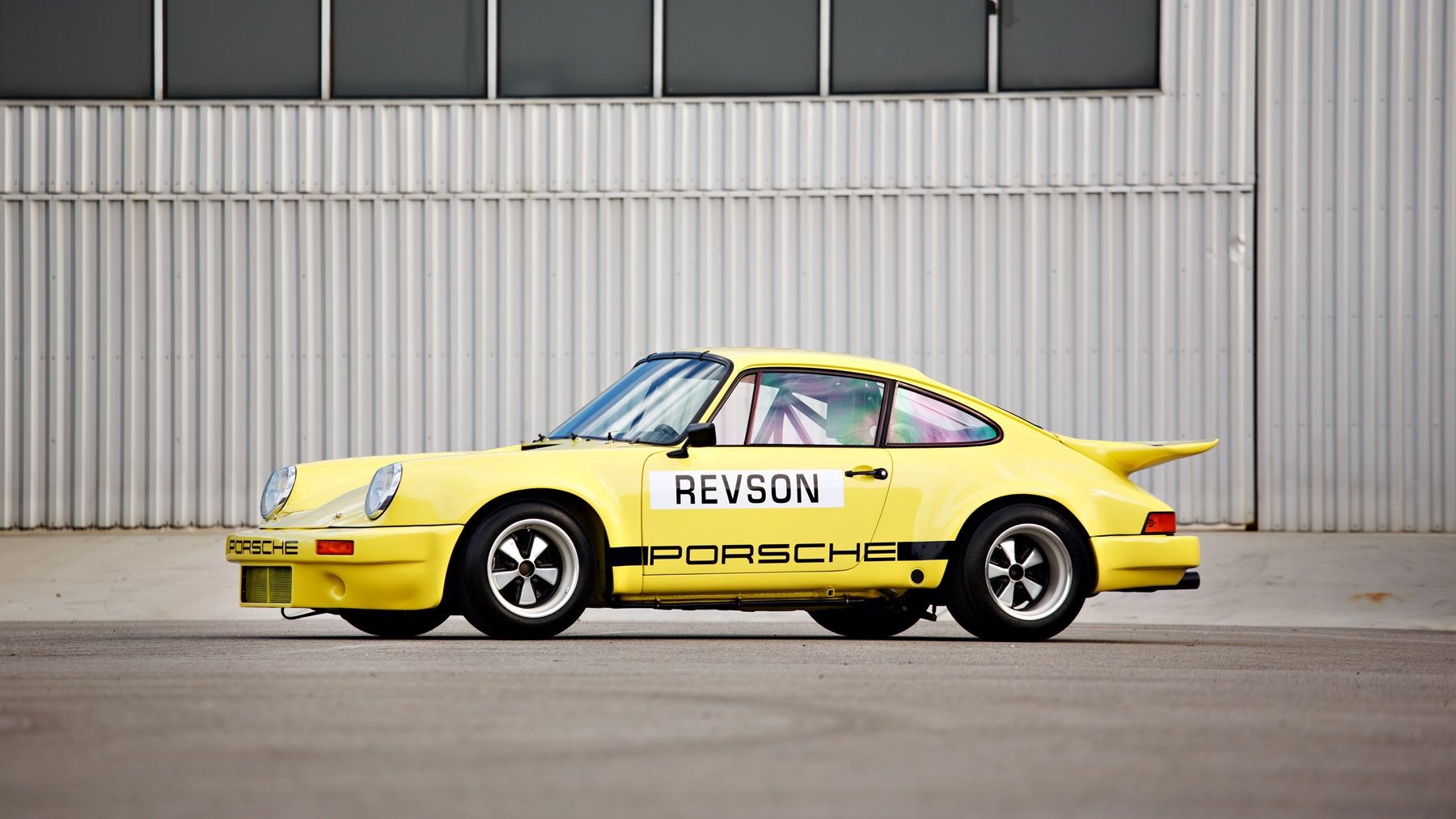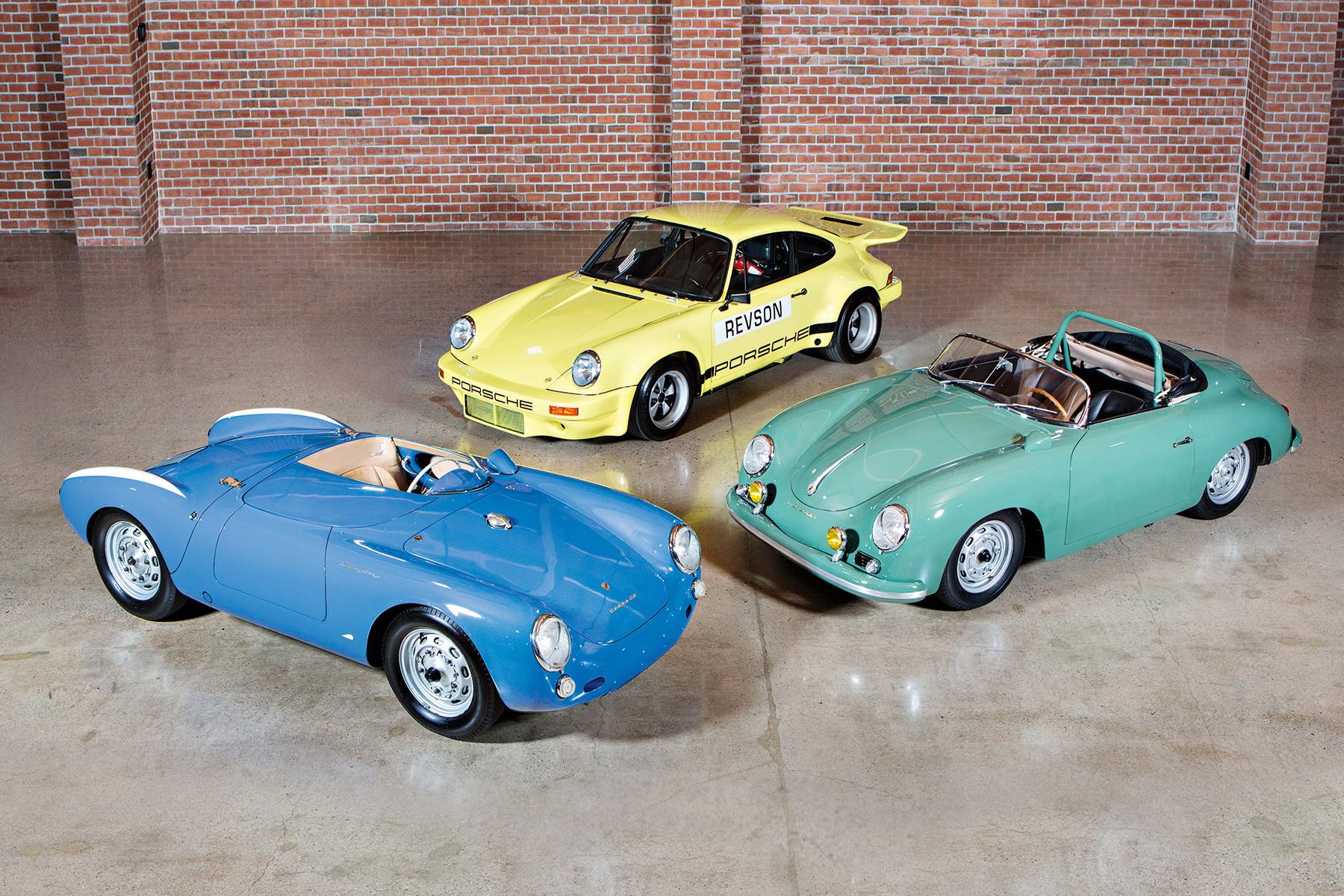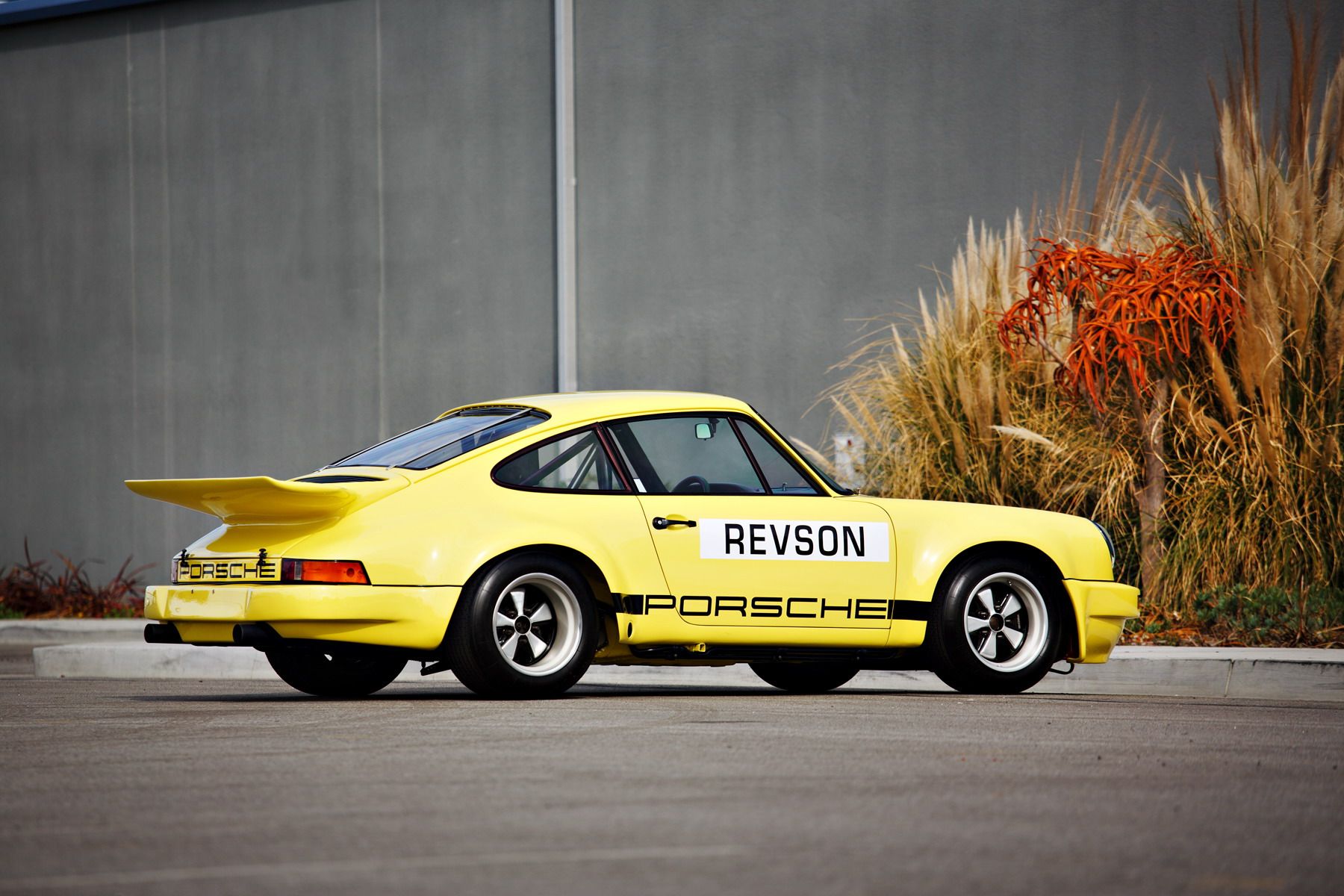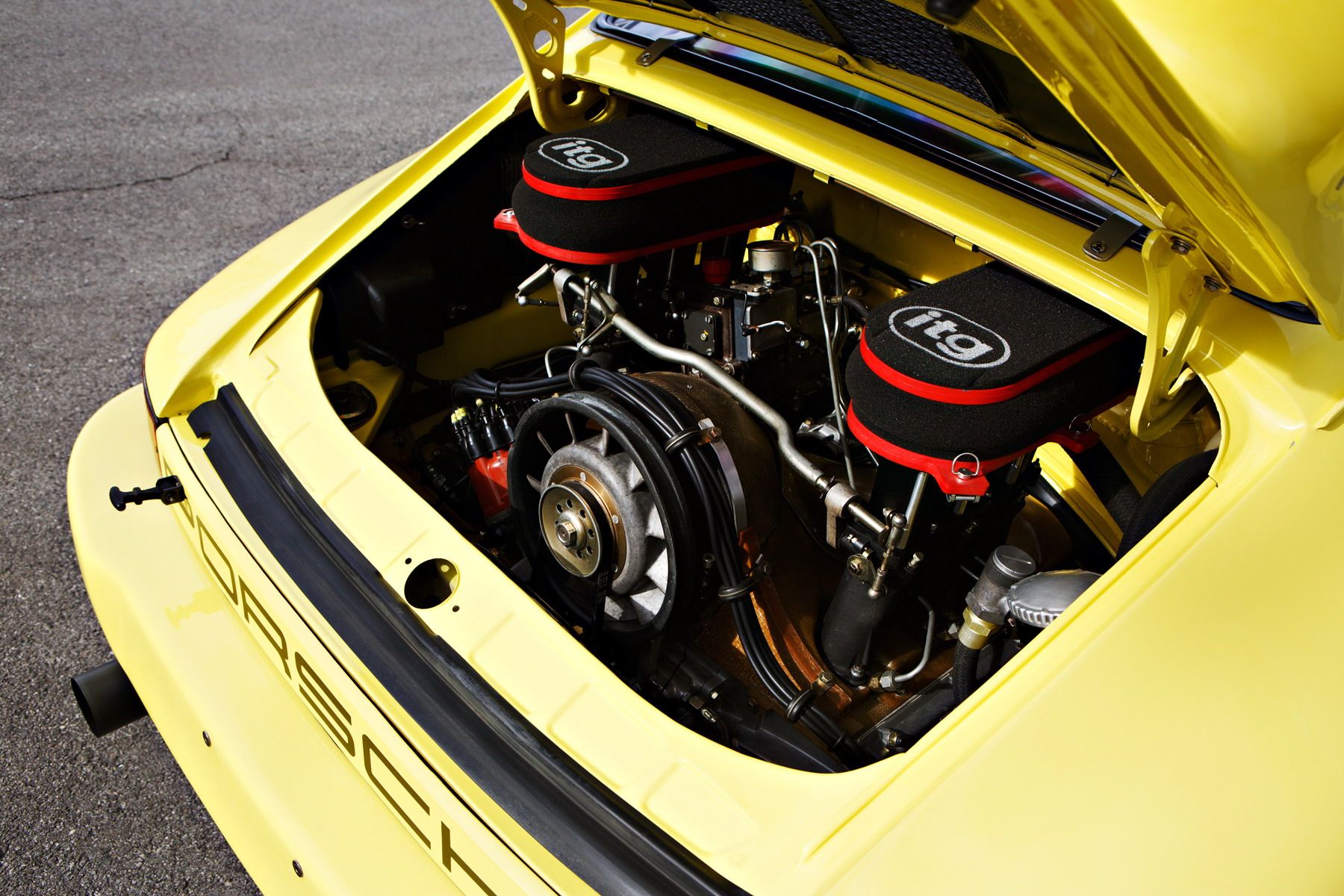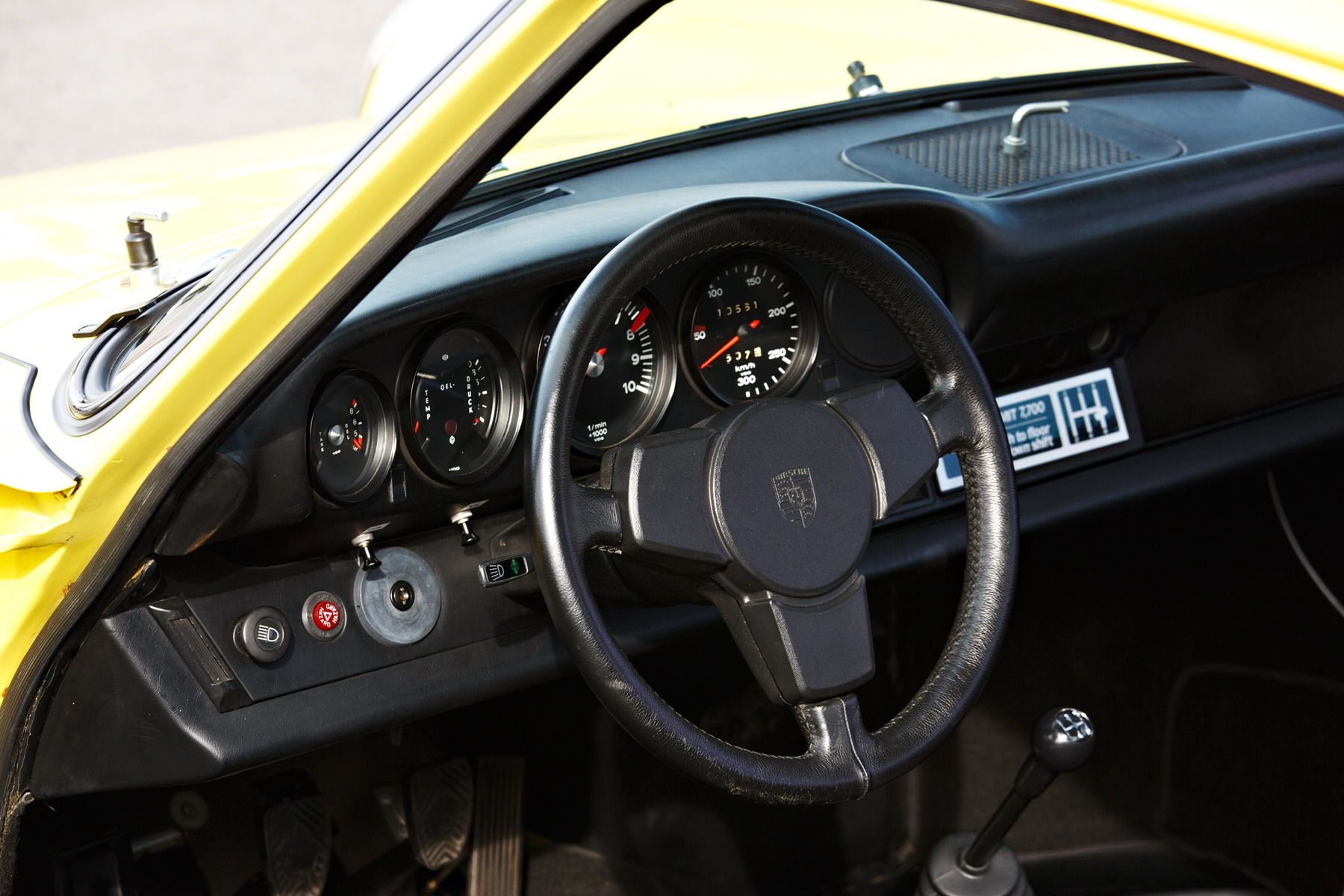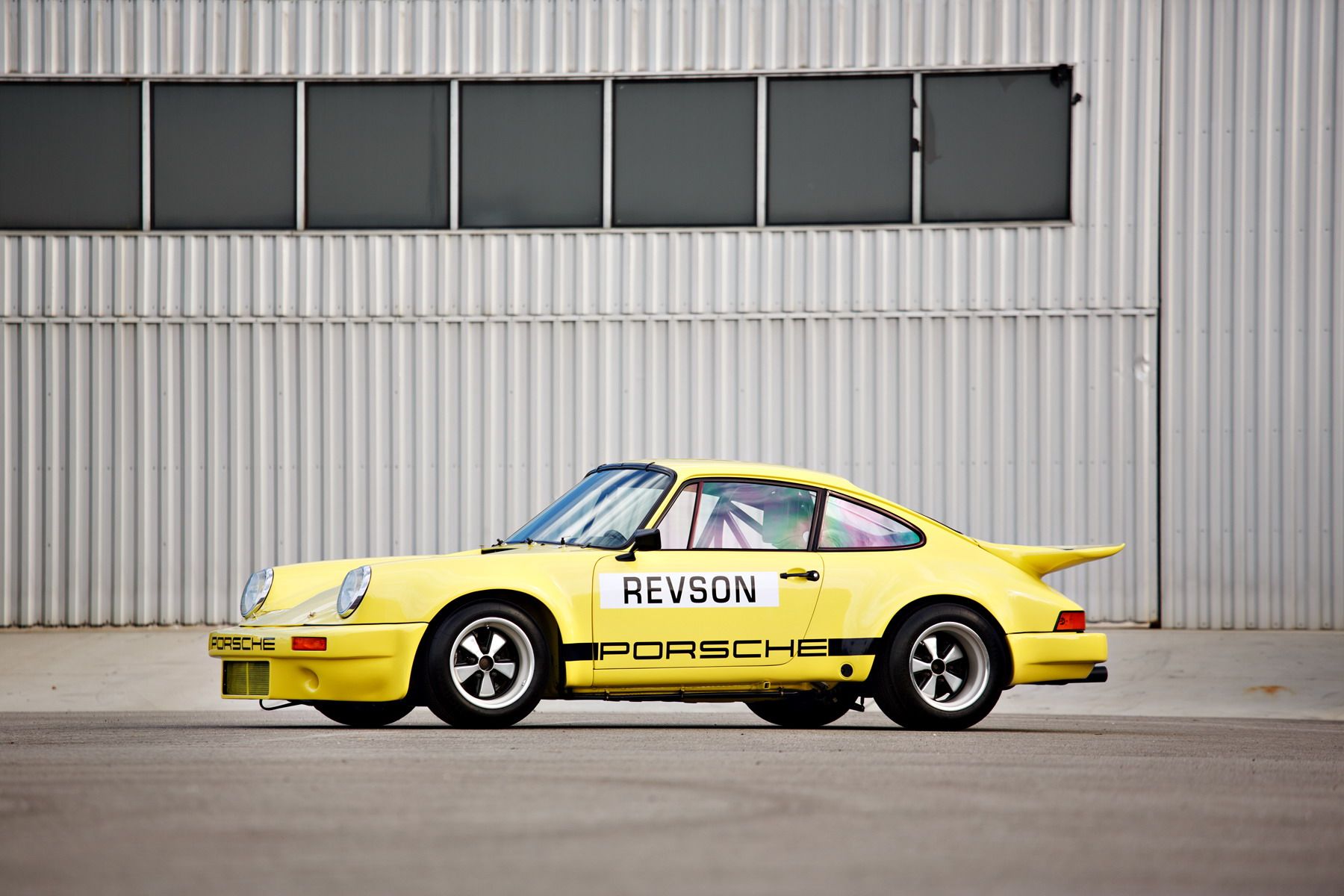In October 1973, twelve of the top drivers in the world were invited to compete in IROC, the International Race of Champions, an event penned by the legendary Roger Penske. The drivers were selected from the four major racing series at the time, Formula One,->ke190 NASCAR,->ke3635 SCCA, and USAC, and included names such as Mark Donohue, George Follmer, A.J. Foyt, Richard Petty, and Bobby Unser. All were to drive the same car, as the goal of the event was to reduce variables such as the vehicle and its modifications and to put emphasis on the skill and race strategies for the drivers. Penske's vehicle of choice was the Porsche 911 RSR.
Based on the RS 3.0 road car, the RSR had a wide body that allowed for Fuchs wheels shod in fat tires and a large, fiberglass whaletail instead of the ducktail seen on the stock models. The 3.0-liter engine was tweaked to deliver 315 horsepower instead of 231, but the standard five-speed transmission was preferred to the close-ratio units used on the racing versions. Only 15 were built and unleashed in a series of four races held at Riverside Raceway and Daytona Speedway in 1973 and 1974. The championship was won by Mark Donohue, who scored a $54,000 prize, the equivalent of nearly $300,000 today.
Most IROC-spec Porsches->ke1 were sold following their service in the IROC series, including this bright yellow example that has spent its recent years in Jerry Seinfeld's collection. A fervent collector of Porsche-badged vehicles, the actor decided to part with this rare IROC racer, which was auctioned off for more than $2 million by Gooding & Company on March 11th, 2016.
Updated 03/14/2016: Jerry Seinfeld sold his Porsche 911 Carrera 3.0 IROC RSR at the 2016 Amelia Island Auction for the amazing price of $2.31 million.
Note: All images copyright and courtesy of Gooding & Company
Continue reading to learn more about the 1974 Porsche 911 Carrera 3.0 IROC RSR.
1974 Porsche 911 Carrera 3.0 IROC RSR
- Make: Array
- Model: 1974 Porsche 911 Carrera 3.0 IROC RSR
- Engine/Motor: flat-6
- Horsepower: 315
- [do not use] Vehicle Model: Array
Exterior
Like may vintage race cars, this IROC RSR, identified by chassis No. 911 460 0016, was modified and campaigned in the IMSA Camel GT Series in 1974 and 1975. Fortunately, the car was later restored to its original IROC specifications, including the bright yellow body color with black stripes and "Porsche" lettering above the side skirts, as well as the IROC front bumper and the whaletail. Although it has been entered in several vintage races and displayed at various events, including the Rennsport Reunion II at Daytona Speedway, the car looks as if it just arrived at Roger Penske's shop in 1973. It's no wonder that Gooding & Company expects to sell it for more than $1 million.
Interior
Despite being developed for a racing series, the IROC RSR came with a nearly stock interior. The dashboard was identical to the road car, the steering wheel was wrapped in leather, while the floor had factory carpeting and mats. Far from fancy when compared to today's 911, the RSR's cockpit was spartan yet sporty. Almost every single detail was finished in black, but that was the norm back in the day, especially for track-oriented sports cars. Restored to its original specifications, the cockpit is also gorgeous to look at. There is minor wear and tear, but it's something you would normally expect in a 40-year-old car.
Drivetrain
All IROC RSRs came with a modified version of the road car's 3.0-liter flat-six engine. The units had the RS' "butterfly" injection and generated 315 horsepower, 84 more than the standard model. Shifting duties were handed over to a stock five-speed manual transmission, despite the fact that Porsche had a very competitive, close-ratio unit at the time. Tipping the scales at less than 2,000 pounds, the IROC RSR needed only 5.5 seconds to hit 60 mph from a standing start, and around 12 ticks to reach 100 mph. Top speed was rated at nearly 180 mph, an impressive figure in the mid-1970s.
Prices
Sold for less than $30,000 back in 1973, the IROC RSR is now considered one of the most valuable classic 911s out there, particularly due to their extremely limited run. Restored versions are known to fetch in excess of $800,000 and this example here changed owners for $2.31 million, significantly more than its $1.2+ million estimate. Granted, it's not the most expensive classic Porsche out there, but it's among the most valuable 911s.
Competition
BMW 3.0 CSL
The IROC RSR was conceived for a one-make series, meaning all 15 cars competed against each other, but when the inaugural International Race of Champions was over, some of them were raced in various events, where the track-prepped 911 took on full-fledged race versions of the BMW 3.0, Chevrolet Corvette or Ford Mustang. The BMW 3.0 CSL is arguably the most legendary of them all, having won more than 100 events throughout its career, including triumphs at Sebring, Daytona and Talladega.
Launched in the early 1970s, the 3.0 CSL used various inline-six engines with displacements between 3.0 and 3.5 liters. The final and most successful iteration had the largest version, which sent 430 horsepower to the pavement and came with a 8,800-rpm redline. Built in only five units, the 3.0 CSL is also highly collectible and expensive, and much like the IROC RSR, it doesn't hit the auction block very often.
Find out more about the BMW 3.0 CSL here.
Conclusion
In the 1970s, Porsche put together some of the most exciting race cars. While the 911 RSR wasn't as fast as the 935 or prototypes such as the 917 and 936, its lightweight construction and solid reliability made it a tremendous weapon against more powerful sports cars. Sure, the IROC was short-lived and made brief appearances outside the series it was created for, but the fact that it was driven by the most successful racing drivers of the early 1970s was enough to turn it into a rare collectible. And, while it wasn't as radical as other race-spec 911s, the fact it was approved by Mark Donohue, arguably the most versatile driver of the era, speaks volumes of the tremendous potential it had on the race tracks.

